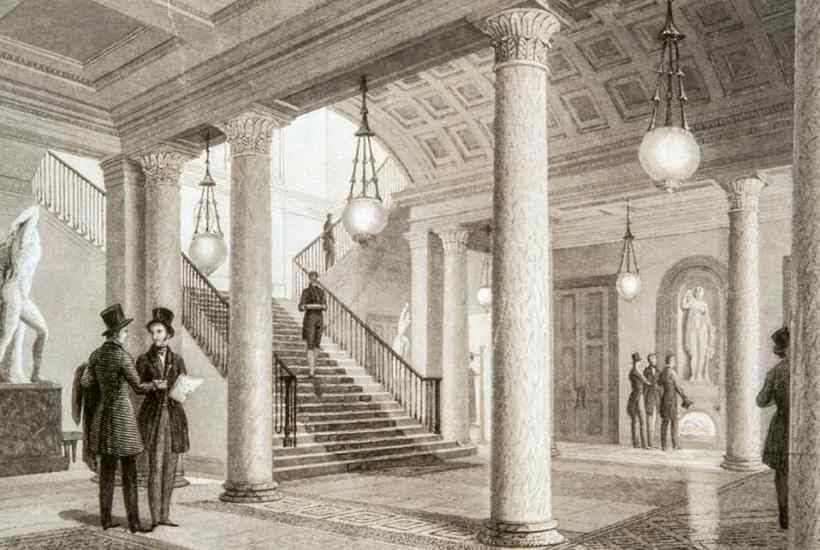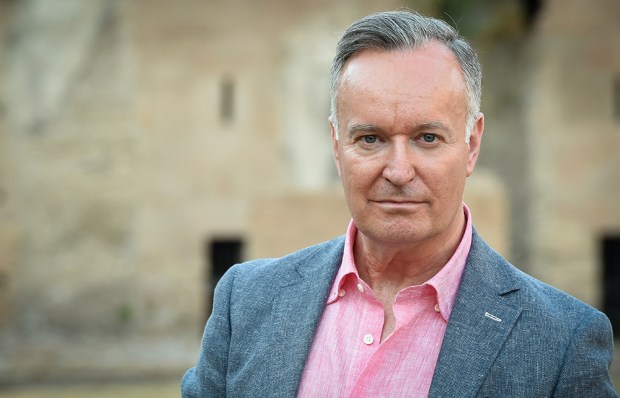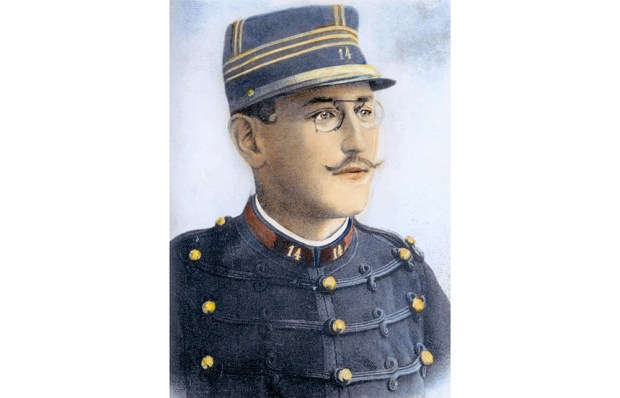At the height of the IRA’s terrorist campaign on mainland Britain in December 1974, a bomb was lobbed through the front window of the In & Out – the Naval and Military Club, then in Piccadilly. Exploding, it knocked everyone off their feet, including the barman Robbins, and trashed the Long Bar. But in the silence that followed came the unwavering request of senior member Commander Vaughan Williams: ‘Another pink gin please, Robbins.’
A subsequent cartoon in the London Evening Standard depicted the scene of devastation (no one was injured or killed) with a mess-jacket-wearing member calmly wondering what the barman had put in his pink gin: ‘But I’ll have another!’ That combination of sangfroid and eccentricity is perhaps typical of London’s private members’ clubs and is amusingly captured in this riveting history.
At first, London clubs were raucous coffee houses with back rooms for gambling. White’s, in St James’s Street, founded in 1693 by the Italian immigrant Francesco Bianco, was the pioneer, followed by other proprietary clubs where aristocrats could gossip and gamble, racking up vast debts. In the early 19th century came a significant change, Seth Alexander Thévoz, the author of Behind Closed Doors, reveals, in the form of the member-owned club, aimed at like-minded middle-class professionals. This engendered some snobbery from the Duke of Wellington, who declared that his two great life lessons were: ‘Never write a letter to your mistress and never join the Carlton Club.’
The first of these new-style establishments was the United Service Club, appealing to some senior military officers. The idea of generals coming together provoked controversy among those fearing a continental- style military coup d’etat. According to an article in the Times in 1816:
It is a legitimate and wholesome terror that no man who has ever turned over the history of this or that country can view a military combination of such a kind, and at such a time, without alarm.
It was, however, the creation of middle-class professionals’ clubs, such as the Athenaeum for artists and writers and the Oriental Club for East India Company veterans, that engendered a more sedate Victorian atmosphere, far away from that of debauched ancien régime nobles.
It was in the cosy interiors of palatial club houses along Pall Mall and in St James’s Street where politicians and plutocrats conspired to run the country, though Thévoz argues that ‘club government’ has been rather overestimated and was confined mainly to discreet lobbying. These clubs were also harbingers of modernity, being among the first buildings to have gas and then electric lighting, passenger lifts and telephones. Far from serving ‘school food’, innovative chefs were attracted to the top clubs in the 19th century, including Alexis Soyer, whose signature dish ‘Lamb Cutlets Reform’ is still served at 104 Pall Mall. There was even a degree of openness in allowing non-white members to join, such as the Gujarat-born Parsi merchant Dadabhai Naoroji, who became a member of the National Liberal Club in 1885 and stood as a Liberal party MP the following year.
At times, the canvas of this book is almost too broad, with chapters on women’s salons in the 18th century, working men’s clubs, Soho drinking and sex clubs, plus colonial establishments. Apparently the Bangalore Club, in southern India, still displays a ledger showing an unpaid bar bill of 13 rupees incurred by one of its members in 1899, Lieutenant Winston Churchill, whose first club it was. But despite the vastness of its ambition, Behind Closed Doors serves as a well-researched one-stop introduction to the complex social history of the club.
As the librarian of the National Liberal Club (NLC), the author is especially good when gossiping about his own establishment as it became the haunt of a ‘colourful collection of anarchists, anti-capitalists, aristocratic Whigs, intellectuals, religious nonconformists, sexual adventurers, perverts, trainspotters and urine drinkers’ in the 1970s. He recounts the attempted ‘rescue’ of the NLC by the preposterously titled conman George Marks, His Serene Holiness the Prince de Chabris, who sweet-talked the members into allowing him to asset-strip the venerable building, looting its art and treasures so he could retire to Miami on the proceeds.
Overall, Thévoz is optimistic about the survival of London clubs, even in the age of the metaverse and online avatars. The bohemian Black’s in Dean Street (named in opposition to White’s) has recently relaunched itself as a watering hole for cryptocurrency enthusiasts. People will always need to rub shoulders with other people over a well-chosen claret.
Got something to add? Join the discussion and comment below.
Get 10 issues for just $10
Subscribe to The Spectator Australia today for the next 10 magazine issues, plus full online access, for just $10.
You might disagree with half of it, but you’ll enjoy reading all of it. Try your first month for free, then just $2 a week for the remainder of your first year.














Comments
Don't miss out
Join the conversation with other Spectator Australia readers. Subscribe to leave a comment.
SUBSCRIBEAlready a subscriber? Log in